Third-generation survival rates reach 85 percent
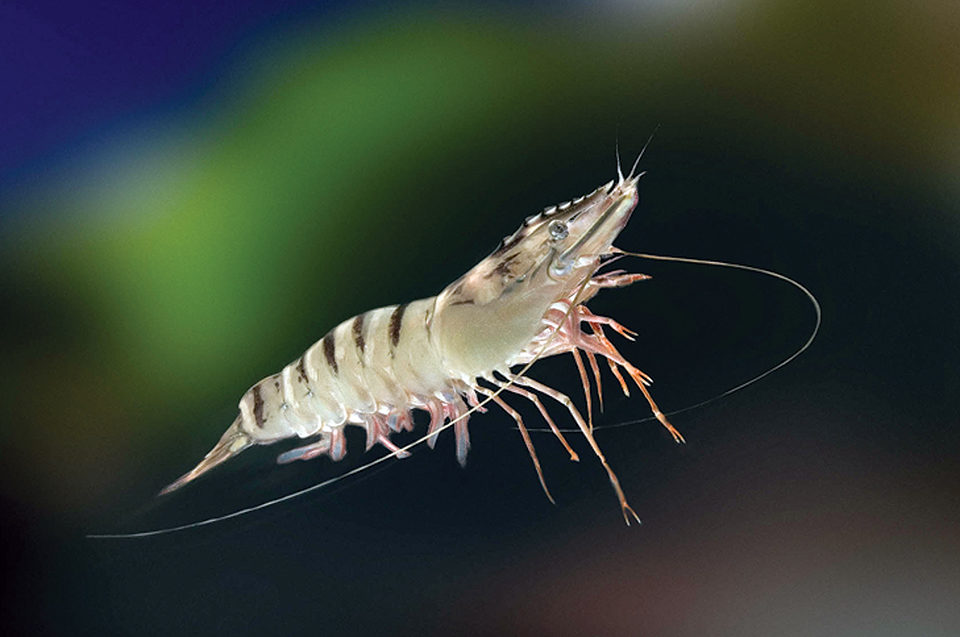
Nearly all of the postlarvae supplying the world’s aquaculture of black tiger shrimp (Penaeus monodon) are produced from spawnings of wild caught broodstock. This dependency on progeny of wild broodstock has limited the productivity of this sector.
Domesticating this species has long been viewed as an effective means to overcome the dependency, alleviate broodstock shortages, and provide year-round availability of postlarvae. Domestication would also enable more control over pathogens in farming systems and support increased farm production through selective breeding of stocks with desirable attributes.
Health considerations
Considerable efforts have been made to establish selective- breeding programs for black tigers around the world, but few have achieved commercial success. Maintaining the health of the stocks by excluding serious pathogens and providing a quality rearing environment is essential for successful domestication. Several P. monodon domestication programs have faltered when low level viral infections progressed to disease when shrimp were reared in suboptimal environments.
To overcome these health issues, the Commonwealth Scientific and Industrial Research Organisation (CSIRO) and a collaborating Australian farm have used clear-water tank and raceway systems for domesticating P. monodon. These systems permit greater environmental control and biosecurity than typical pond-rearing systems.
The use of these systems has been an important factor in advancing domestication of P. monodon stocks in Australia, even though the stocks have low levels of infections of endemic viruses such as Gill-Associated Virus and Mourilyan Virus. Furthermore, when reared in commercial ponds, the progeny of these domesticated broodstock now have significantly higher survival than the progeny of wild broodstock.
Improved performance
The growth, survival, and reproductive performance of the domesticated P. monodon stocks have been monitored in tanks at CSIRO over many years and generations. Improved husbandry has resulted in significantly faster growth of tank-reared broodstock over recent years, best demonstrated by the increase in weight of first-generation females in 2002 as compared with first-generation females in 1997 (Fig. 1). In combination, the improved husbandry and genetic selection for life in captivity have both likely contributed to the incremental increases in growth of broodstock with successive generations (Fig. 1).
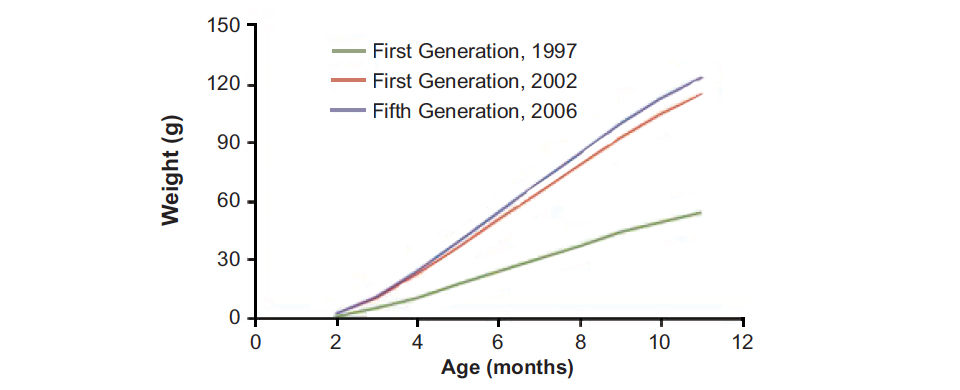
Survival from postlarvae to adult has also improved beyond the second generation, reaching 85 percent by the third generation. The modest fecundities and low hatching rates of spawnings from the domesticated stocks in the initial generations also increased beyond the second generation. These improvements are attributed to the combined effects of improved husbandry, selection for survival and growth in captivity, and improved maturation diets.
The reproductive performance of domesticated black tiger stocks in Australia is reaching commercially viable levels, with hatcheries able to produce enough postlarvae to stock commercial ponds. More importantly, the improvement in reproductive output now provides operators the opportunity to selectively breed their stocks with heightened levels of selection intensity, which will significantly increase their farm productivity.
The economic benefits of the increased selection intensity can clearly be seen in the increased yields of fifth-generation P. monodon stocks reared in commercial ponds in Australia (Fig. 2). The modest selection intensities applied in the earlier generations due to the limited reproductive output of the stocks resulted in negligible improvements in pond yield. However, the impacts of the cumulative selections and increasing selection intensities with each successive generation produced significant improvements in pond yields by the fifth generation.
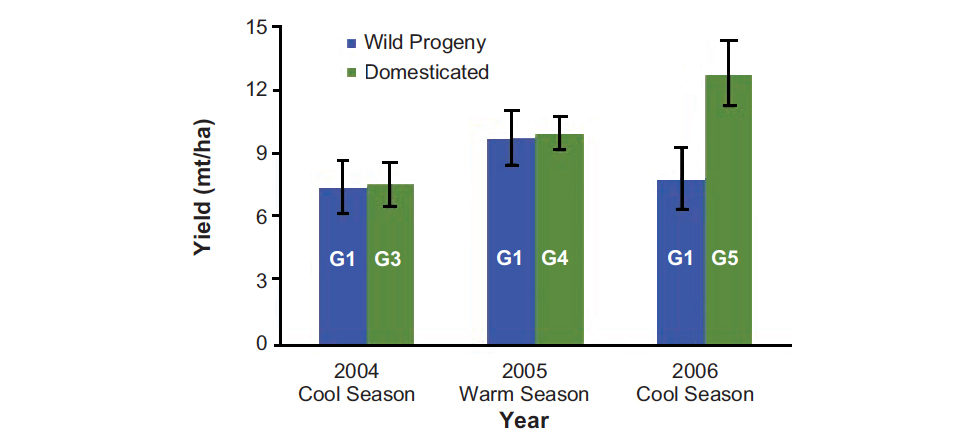
The Australian industry has the opportunity to develop further breeding programs that use advanced genetic techniques to overcome some of the constraints of conventional selective-breeding techniques.
Genotyping
High-throughput genotyping systems such as those developed at CSIRO are destined to play a significant role in future P. monodon selective-breeding programs in Australia. Genotyping removes the need for separate family rearing, physical tagging, and artificial insemination for producing and identifying families. Genetic information provides the means to develop more effective breeding programs than those based entirely on phenotypic information.
Quantification of key genetic parameters will determine the efficiency of different breeding strategies and be important when developing future programs. In particular, quantifying correlations between key production traits, such as pond harvest weight and traits at other ages or in different culture environments or systems will be crucial for designing breeding programs that balance management practicalities, minimize stress on stocks, and maximize genetic gain.
Ongoing improvements
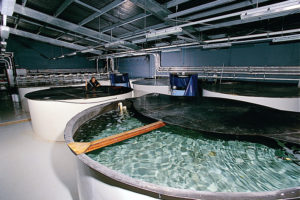
Future breeding programs would also benefit from the application of techniques for preserving gametes, such as chilled storage or cryopreservation of sperm. Such preservation techniques would more readily allow complex mating experiments requiring artificial insemination, translocation of genetic resources between programs, and biosecurity via secure storage of high-performance genetic resources.
Future programs may also seek improvements in productivity through complimentary approaches, such as using triploidy induction in stocks to bias sex ratios toward the faster-growing female sex. Notably, triploidy also provides a means for developing sterile stocks, enabling breeders to protect the genetic resources contained within the elite lines developed within their programs.
The ongoing challenge in progressing from domestication to selective breeding of P. monodon in Australia and elsewhere is to develop efficient and practical breeding methods. While differences in biology between P. monodon and successfully selected species such as Litopenaeus vannamei may present a challenge to breeders, the application of new techniques will allow successful P. monodon programs to progress.
Unique challenges
Australia has some unique challenges compared to other P. monodon-producing countries. These include very strict import regulations, relatively high labor costs, and broad variation in climate regimes across the production sector. These factors may result in the development of breeding programs that are significantly different from those in other producing regions.
Since Australian regulations prohibit the importation of live shrimp, it is unlikely Australian breeders will ever be able to source new genetic stocks from breeding programs overseas. Consequently, the only sources of new genetic material for Australian breeders will be endemic wild stocks or Australian breeding programs.
Under these circumstances, Australian P. monodon breeders are likely to benefit by fostering cooperative efforts to develop cross-bred elite lines. Such cooperation in the exchange of elite genetic resources has been shown to benefit both breeders and producers in other Australian primary industries. The capacity of the Australian P. monodon industry to follow this pathway will be significantly enhanced by the use of the genetic technologies being developed in parallel with advances in the domestication of Australian P. monodon stocks.
(Editor’s Note: This article was originally published in the January/February 2008 print edition of the Global Aquaculture Advocate.)
Now that you've reached the end of the article ...
… please consider supporting GSA’s mission to advance responsible seafood practices through education, advocacy and third-party assurances. The Advocate aims to document the evolution of responsible seafood practices and share the expansive knowledge of our vast network of contributors.
By becoming a Global Seafood Alliance member, you’re ensuring that all of the pre-competitive work we do through member benefits, resources and events can continue. Individual membership costs just $50 a year.
Not a GSA member? Join us.
Authors
-
Greg Coman, Ph.D.
CSIRO Food Futures National Research Flagship
CSIRO Marine and Atmospheric Research
P. O. Box 120
Cleveland, Queensland 4163 Australia[117,97,46,111,114,105,115,99,64,110,97,109,111,99,46,103,101,114,103]
-
Nigel Preston, Ph.D.
CSIRO Food Futures National Research Flagship
CSIRO Marine and Atmospheric Research
P. O. Box 120
Cleveland, Queensland 4163 Australia
Tagged With
Related Posts
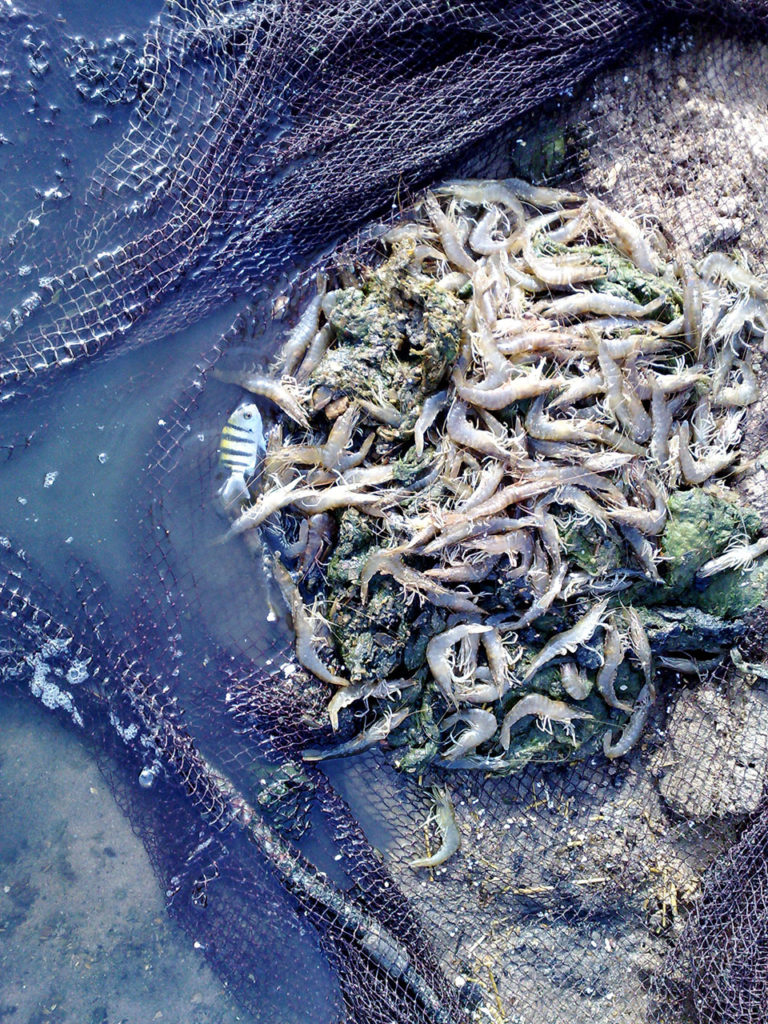
Health & Welfare
Examining domestication of green tiger shrimp in Egypt
The domestication of green tiger shrimp (Penaeus semisulcatus) as a source for seedstock could help expand aquaculture in Egypt. Trials by the authors compared the reproductive performance of wild male/wild female pairings with that of pond-reared male/pond-reared female and wild male/pond-reared female pairings.
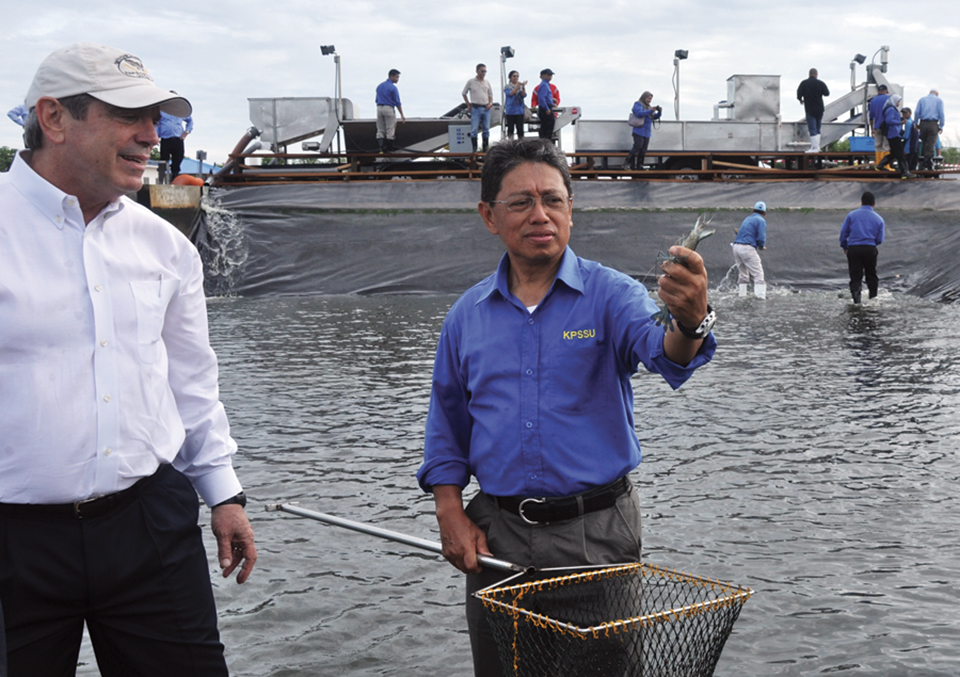
Health & Welfare
Brunei project develops technology for large black tiger shrimp production, part 1
A five-year project was undertaken in Brunei Darussalam to develop advanced technology for the production of large black tiger shrimp. A combination of technologies has enabled efficient production of large-sized black tiger shrimp, which could lead to a resurgence of this species in Asia.
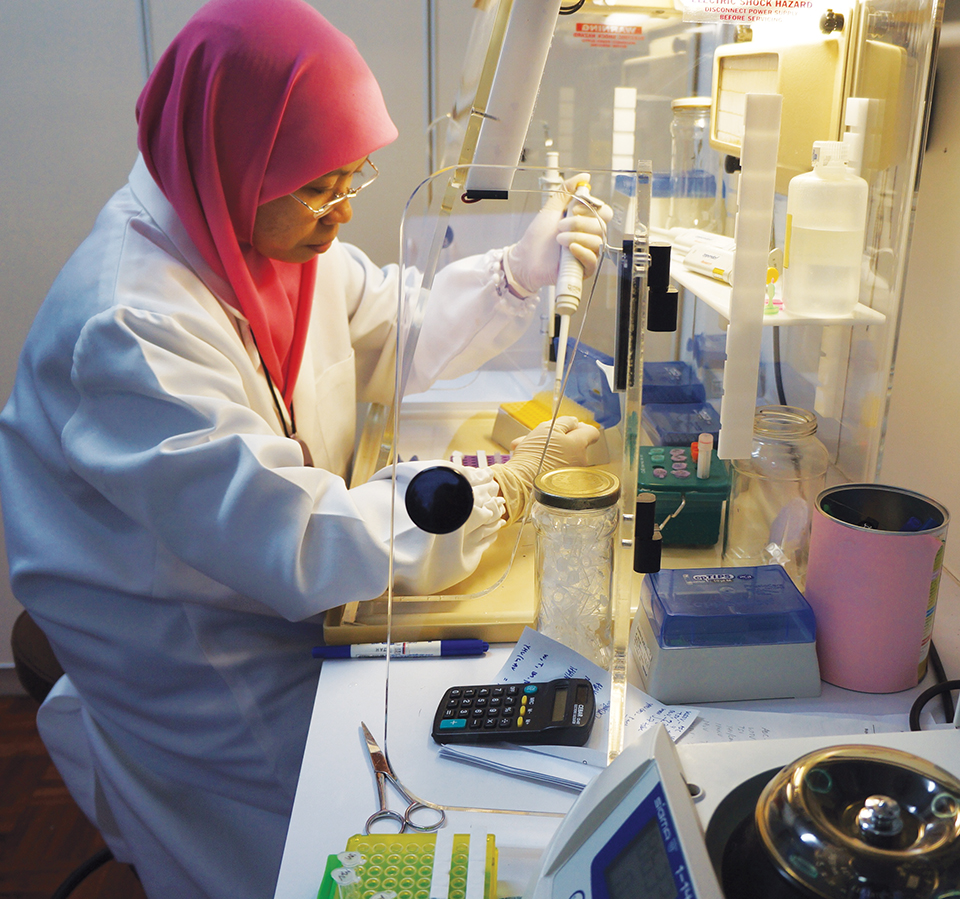
Health & Welfare
Brunei project develops technology for large black tiger shrimp production, part 2
For a five-year project undertaken in Brunei Darussalam to develop advanced technology for production of large black tiger shrimp, a comprehensive disease diagnostic laboratory was developed to enable detection of known and emerging shrimp pathogens by molecular and histological methods.
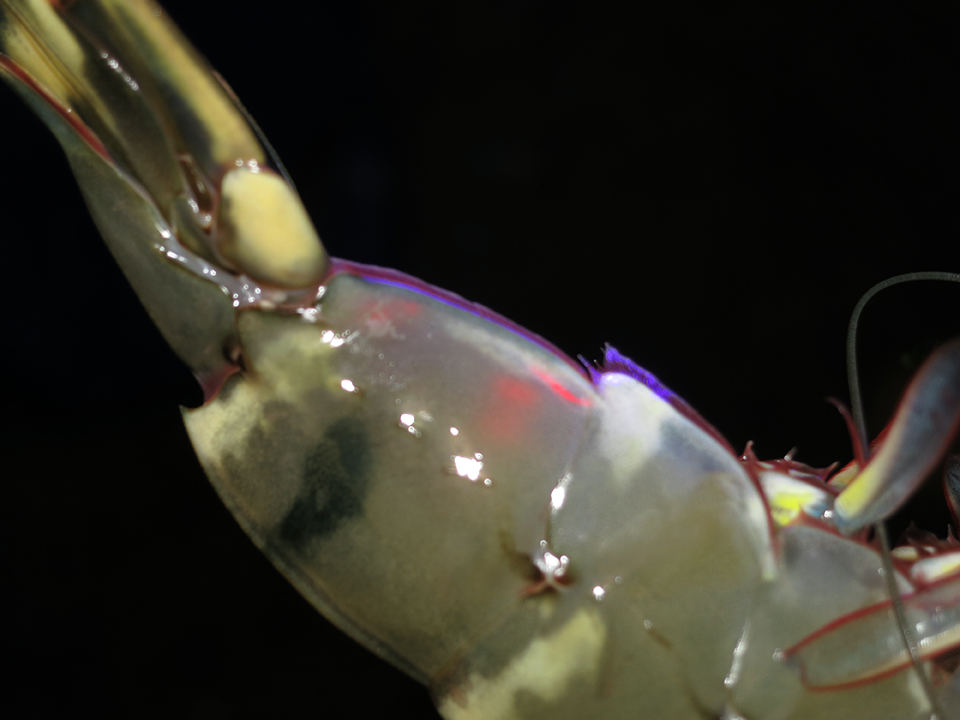
Health & Welfare
Brunei project develops technology for large black tiger shrimp production, part 3
Specific pathogen-free offspring developed from founder populations of P. monodon collected from Brunei coastal waters were introduced into a biosecure breeding program, where they have been reared to the fifth generation using family-based selection for reproduction and growth.



